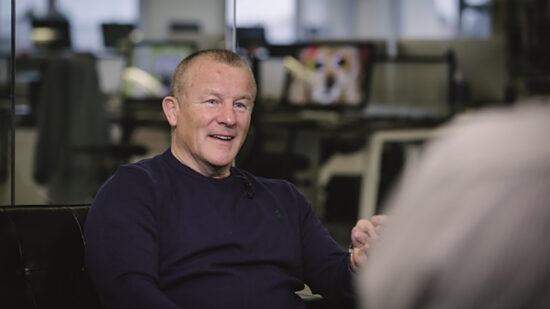Governors of major central banks seem to agree on one thing: rate hikes cannot go on forever. Recent signals from the US Federal Reserve (Fed), the Bank of England and the European Central Bank (ECB) imply their hiking cycles may collectively come to an end by the second half of 2023, writes James Ashley, head of international market strategy at Goldman Sachs Asset Management.
In early February, Fed chair Jerome Powell said there would be ‘a couple more’ rate hikes in the US. Not long after, Andrew Bailey followed suit by hinting the Bank of England would ‘soon’ reach an endpoint. Even some members of the ECB’s governing council, which began its hiking cycle later, have suggested further rate rises are not a given beyond March. While recent inflation data from the US and Europe suggest these hiking cycles are yet to finish, the end is now at least in sight.
The good news is inflation is falling, though we believe it may take some time before we see inflation return to the 2% level which is ostensibly the target in advanced economies. There are firm reasons to believe higher inflation is neither transitory nor persistent, but rather structural. With ageing demographics, deglobalisation and decarbonisation in play, these forces are driving higher inflation that may stick around for some time. As a result, policymakers may need to revisit the appropriateness of their 2% targets.
What if 3% became the new 2%?
There is nothing sacrosanct about the current 2% goal. Given the profound economic and financial changes over the 25 years since 2% targets were popularised, these structural inflationary impulses may lead to different conclusions as to what is the appropriate nominal anchor for the economy. Perhaps we might see an increase to a 3% target at some point in future.
Encouragingly for investors, an increase in the inflation target to 3% would be a pro-cyclical move, supporting an environment of both higher inflation and stronger economic growth. This could be a boon for risk assets.
To assess the likely impact of a higher inflation target on portfolios, it’s helpful to recall the last 40 years have been characterised by falling inflation and interest rates, resulting in a multi-decade bull market for bonds.
This long period of moderation benefitted portfolios skewed toward fixed-income assets with strong risk-adjusted performance. A conservative portfolio with 40% equities and 60% fixed income delivered about the same return as a more aggressive 60/40 equity-fixed income portfolio, while offering lower volatility.
However, the new cycle is likely to be very different – with higher inflation and interest rates. Our forward-looking assumptions suggest a 60/40 portfolio may deliver a 6.2% return versus 5.2% for a 40/60. That single percentage point difference becomes more substantial when converted into real terms; the real expected return would stand at 3.2% versus 2.2%, based on a 3% inflation rate.
What can investors do amid higher for longer inflation?
In a higher-inflation environment, it makes sense to reallocate capital from traditional developed market equities and fixed income to assets whose characteristics could perform better. Equities would and should remain core as part of a multi-asset portfolio, but small-cap equities and energy stocks would likely see higher returns relative to larger companies and other sectors.
In credit, as ever selective exposure is key. High yield bonds would likely outperform traditional fixed income exposure, though this needs to be balanced with a careful approach to choosing companies to limit default risk. And a higher inflation target in the developed world could enhance the relative attractiveness of some emerging economies’ bonds, particularly those of commodity exporters or countries with a relatively higher debt burden.
Real assets, both public and private, may also perform well in an environment where inflation is higher due to their hedging attributes. If accompanied by strong economic growth, this would likely boost demand for real estate and infrastructure. Leases and revenue streams are often linked to inflation and accompanied by some form of cost pass-through.
While inflation sensitivity varies across the segment, one type of real asset we believe would benefit from higher central bank inflation targets is commodities – given ‘greenflation’ is one of the reasons central banks would consider changing their inflation target in the first place.
Private assets, such as private equity and credit, also have the potential to offer compounding higher returns over time while tapping into differentiated return drivers.
We cannot know if or when major central banks may change their inflation targets, but in any case, economic indicators and structural shifts suggest investors would be wise to prepare for higher for longer inflation.
This article was written for International Adviser by James Ashley, head of international market strategy at Goldman Sachs Asset Management.








